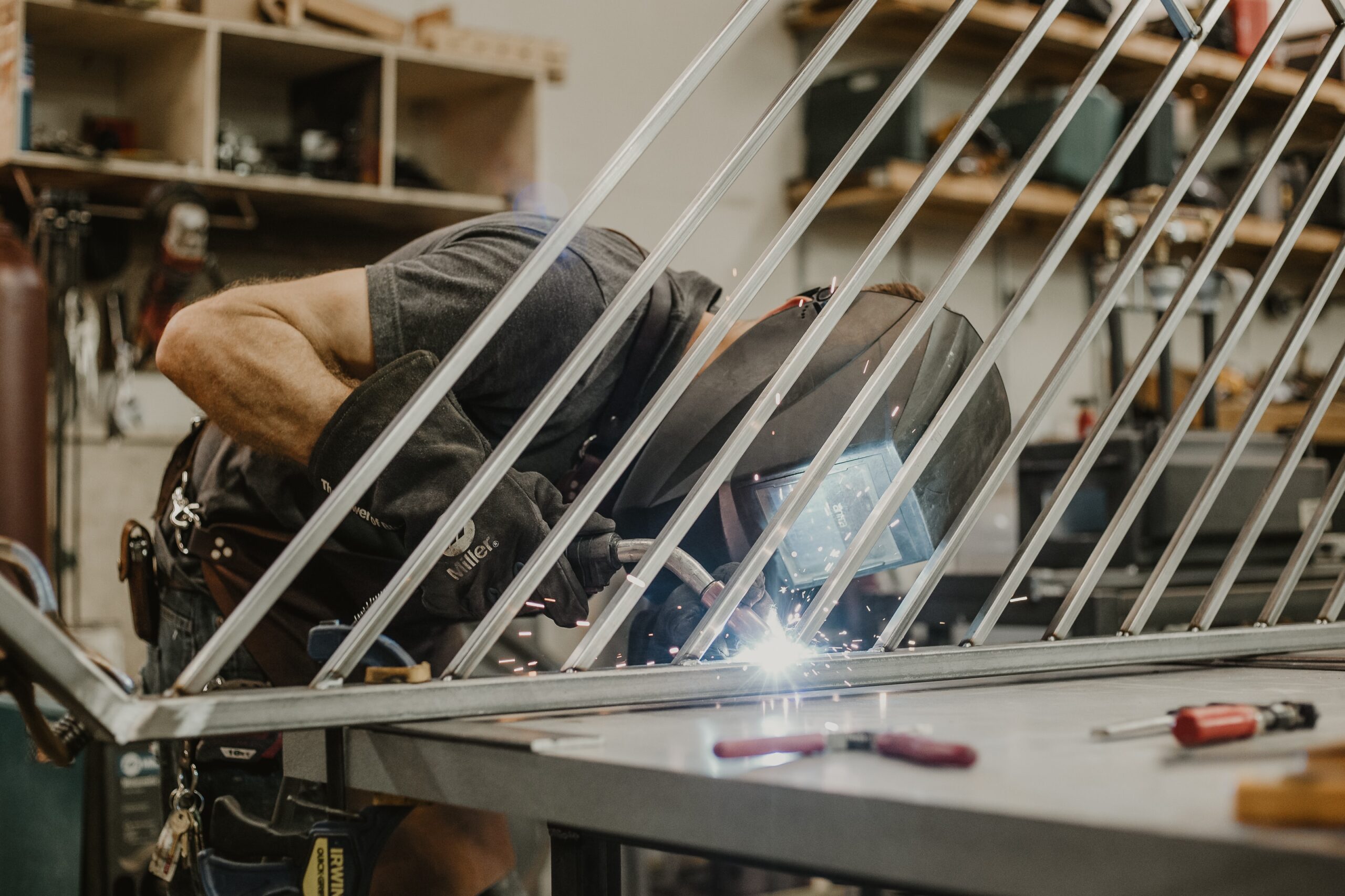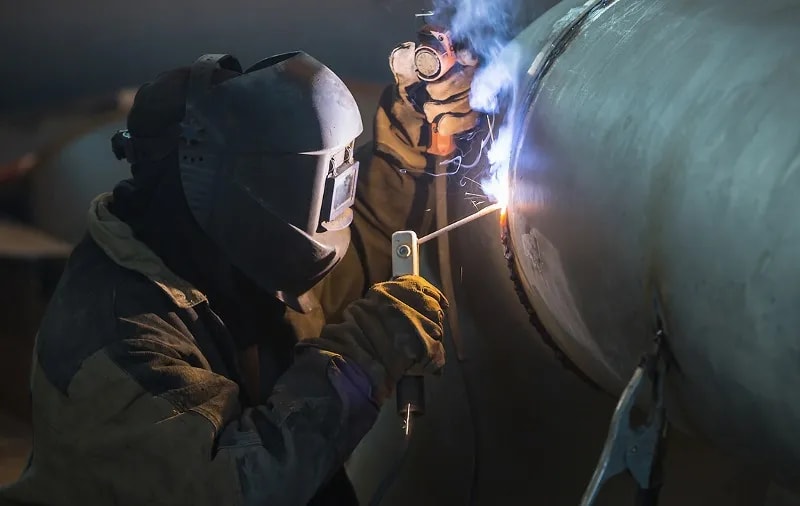Typical Welding Repair Service Issues and Just How to Address Them Effectively
Welding repair services frequently experience a series of issues that can jeopardize the integrity of the last product. Usual problems include poor infiltration, porosity, and misalignment, among others. Each flaw offers unique obstacles that require details approaches for resolution. Recognizing these concerns is vital for welders intending to enhance their skills and outcomes. This conversation will certainly discover these usual welding fixing concerns and efficient techniques to resolve them.
Insufficient Penetration
Poor penetration takes place when the weld metal fails to fully fuse with the base product, leading to weak joints and possible architectural failings. This concern often comes from inadequate warm input, wrong electrode angle, or inappropriate welding speed. Welders may run into poor penetration due to a miscalculation of the essential specifications for a specific product density or kind. Additionally, contamination on the base product's surface can hinder effective bonding, worsening the issue. To attend to insufficient infiltration, welders need to guarantee suitable settings on their tools and maintain a tidy job surface. Routine evaluation of welds is suggested to recognize any kind of deficiencies early, enabling timely improvements and the prevention of endangered structural honesty in welded settings up.
Porosity
Porosity is a typical flaw in welded joints that manifests as tiny gas bubbles caught within the weld steel. This defect can endanger the integrity of the weld, causing decreased stamina and prospective failure under stress and anxiety. Montana Mobile Welding and Repair Belgrade Welding. Porosity typically occurs from contamination, wetness, or inappropriate welding techniques, which enable gases to escape right into the molten weld swimming pool. To address porosity, welders must assure correct surface area preparation, maintain a tidy workplace, and make use of suitable welding specifications. In addition, selecting the best filler material and securing gas can minimize gas entrapment. Normal inspection and screening of welds can assist determine porosity early, assuring timely restorative activities are taken, thus protecting the high quality and dependability of the bonded structure
Imbalance
Imbalance in welding can occur from different aspects, consisting of inappropriate configuration and thermal development. Comprehending the origin is essential for reliable resolution. A number of modification strategies are readily available to straighten elements and guarantee architectural honesty.
Reasons for Misalignment
Welding misalignment typically comes from a range of underlying problems that can compromise structural stability. One main cause is incorrect fit-up of elements prior to welding, which can lead to gaps and uneven surfaces. Variations in thermal development throughout the welding procedure can additionally lead to distortion, especially if the products being signed up with have different coefficients of growth. Furthermore, insufficient fixturing and clamping might fall short to hold parts securely in location, causing activity during welding. Improperly maintained equipment, including welding machines and devices, might introduce disparities in the weld grain, additional contributing to imbalance. Ultimately, driver error, coming from not enough training or experience, can also play a significant function in producing misaligned welds.
Adjustment Methods Readily Available
Resolving imbalance efficiently calls for a combination of rehabilitative strategies tailored to the specific problems handy. One common approach is making use of components or jigs to hold parts in the correct setting throughout welding, making sure regular positioning. Additionally, preheating the products can help in reducing distortion and enhance fit-up. For considerable imbalance, mechanical adjustment strategies, such as using hydraulic jacks or clamps, can be used to deal with the position before welding. Post-weld warmth treatment might additionally be necessary to alleviate anxieties triggered by imbalance. Ultimately, careful examination and change throughout the setup stage can protect against imbalance issues from ending up being considerable issues, promoting a smoother welding procedure and enhancing overall architectural honesty.
Distortion
Distortion is an usual obstacle in welding that can arise from numerous elements, consisting of unequal cooling and heating. Comprehending the root causes of distortion is necessary for executing effective avoidance techniques. Resolving this problem not just boosts architectural integrity but additionally improves the general high quality of the weld.
Sources of Distortion
When based on the intense warm of welding, materials commonly undergo modifications that can lead to distortion. This sensation largely develops from thermal expansion and contraction throughout the welding process. As the weld area warms up, the material increases; upon cooling, it acquires, which can develop inner tensions. Furthermore, uneven home heating throughout a workpiece can exacerbate these tensions, leading to warping or flexing. The sort of material also plays a substantial duty; steels with varying thermal conductivity and coefficients of growth might respond differently, resulting in unpredictable distortions. Inadequate joint layout and inadequate fixturing can add to imbalance during welding, increasing the possibility of distortion. Recognizing these causes is necessary for efficient welding repair service and avoidance approaches.
Avoidance Techniques
Effective prevention methods for distortion throughout welding emphasis on managing warm input and making sure appropriate joint design. Maintaining a consistent warm input assists to lessen thermal development and contraction, which can bring about distortion. Using strategies such as pre-heating the workpiece can likewise minimize the temperature gradient, promoting uniform heating. Go Here In addition, choosing ideal joint designs, such as T-joints or lap joints, can improve security and minimize stress focus. Executing correct fixturing to safeguard the work surfaces in position better help in preserving positioning throughout the welding process. Staggered welding series can distribute warm extra equally, protecting against local distortion. By using these strategies, welders can greatly reduce the possibility of distortion and enhance the total quality of their welds.
Fracturing
Fracturing is a typical concern run into in welding fixings, typically arising from different elements such as incorrect cooling rates, material choice, or insufficient joint prep work. The occurrence of splits can significantly endanger the stability of the weld, causing potential failures throughout procedure. To resolve this concern, welders have to first analyze the origin, making certain that products are suitable and properly chosen for the certain application. Additionally, managing the cooling rate throughout the welding process is important; fast air conditioning can induce stress and anxiety and bring about cracking. Proper joint style and prep work additionally add to reducing the threat. Implementing these methods can enhance weld welding steel top quality and durability, inevitably minimizing the chance of fracturing in completed weldments.

Insufficient Fusion
A considerable problem in welding repair services is insufficient blend, which occurs when the weld metal does not sufficiently bond with the base material or previous weld passes - Belgrade. This flaw can lead to weak points in the joint, possibly endangering the honesty of the welded structure. Variables adding to insufficient fusion include inadequate warmth input, incorrect welding technique, and contamination of the surfaces being signed up with. To resolve this problem properly, welders must guarantee correct pre-weld cleaning and surface area prep work, in addition to change their welding parameters to attain sufficient infiltration and blend. Normal evaluation during the welding procedure can likewise help determine insufficient combination early, allowing for timely restorative actions to improve the total top quality of the weld
Overheating
While welding fixings can boost structural stability, overheating provides a significant challenge that can result in material destruction. Too much warmth throughout welding can change the mechanical residential or commercial properties of metals, leading to reduced stamina, raised brittleness, and warping. This phenomenon is specifically vital in high-stress applications where structural integrity is vital. Identifying getting too hot can include visual examinations for staining or distortion, along with keeping track of temperature throughout the welding process. To minimize the dangers connected with overheating, welders should employ ideal strategies, such as managing warmth input, adjusting travel rate, and using ideal filler materials. Additionally, executing pre- and post-weld warmth therapies can help bring back product homes and boost the overall quality of the repair work, ensuring long-lasting performance and security.
Regularly Asked Inquiries
What Are the Usual Signs of a Welding Defect?

Just How Can I Examine My Welds for High quality?
To test welds for top quality, one can utilize aesthetic assessments, ultrasonic testing, and radiographic methods. Each strategy assures architectural integrity, determines flaws, and confirms adherence to defined criteria, eventually enhancing the reliability of the welded joints.
What Security Safety Measures Should I Take While Welding?
When welding, one ought to focus on safety by using suitable individual protective devices, making certain proper ventilation, securing combustible products away, keeping a clean work space, and being conscious of environments to prevent crashes and injuries.
Can I Repair a Weld Without Redesigning the Entire Joint?
Fixing a weld without redesigning the entire volt welder joint is feasible, depending on the damage (Montana Mobile Welding and Repair). Techniques such as grinding, including filler product, or utilizing a welding procedure can effectively resolve particular imperfections while protecting the bordering structure
What Equipment Are Crucial for Effective Welding Fixes?
Necessary devices for reliable welding fixings include a welding equipment, cable brush, mill, protective gear, clamps, and filler products. Each tool plays an important function in guaranteeing high quality and safety and security during the repair process. Porosity commonly develops from contamination, wetness, or improper welding techniques, which allow gases to get away right into the liquified weld pool. Badly maintained devices, including welding devices and devices, might present incongruities in the weld grain, further adding to imbalance. When subjected to the extreme heat of welding, materials typically undertake modifications that can lead to distortion. Breaking is a common concern come across in welding repair services, typically resulting from numerous aspects such as inappropriate air conditioning rates, material option, or inadequate joint prep work. A significant problem in welding repair work is incomplete blend, which takes place when the weld metal does not sufficiently bond with the base product or previous weld passes.